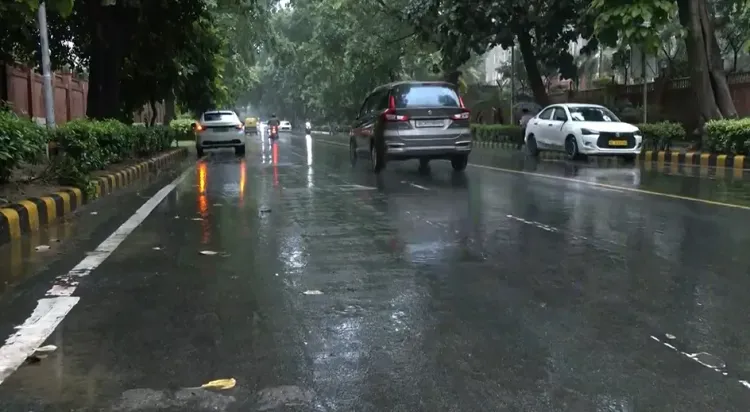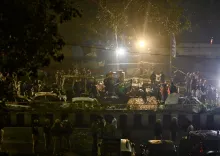Has Rain Offered Relief from Heat? Delhi-NCR Enjoys the Cleanest July Air in a Decade!

Synopsis
Key Takeaways
- Continuous rainfall has led to a significant drop in temperatures.
- Air quality has improved remarkably, with AQI readings in the 'very good' category.
- Areas within Delhi-NCR reported some of the cleanest air seen in years.
- Heavy rains have caused infrastructure challenges, including waterlogging and traffic jams.
- A forecast of continued rain may provide further relief.
New Delhi, July 31 (NationPress) The ongoing rainfall in Delhi-NCR on Thursday has provided a much-needed break from the oppressive heat, while simultaneously resulting in a significant enhancement in air quality.
Data from the Central Pollution Control Board (CPCB) indicates that July 2025 has seen the cleanest air in over a decade, with the Air Quality Index (AQI) readings dipping below 50 in various areas of the region, categorised as 'very good.'
This notable improvement is primarily due to the frequent rain showers experienced over the past week, which have drastically decreased dust and airborne pollutants. Nevertheless, while the rains have purified the atmosphere, they have also caused waterlogging and traffic snarls, presenting major challenges for municipal authorities and daily commuters.
As of July 31, monitoring stations throughout Delhi-NCR reported AQI levels within the 20s and 30s. Key areas such as Alipur (28), Major Dhyan Chand National Stadium (38), Bawana (36), Narela and Nehru Nagar (both 48), Indirapuram in Ghaziabad (31), and Noida’s Sector 62 and Sector 1 (both 34) recorded some of the cleanest air seen in the capital in recent years—often surpassing that of hill stations.
According to the India Meteorological Department (IMD), the region is expected to remain under cloud cover, with light to moderate rain continuing until August 5. Heavy showers accompanied by thunderstorms are anticipated between August 1 and 3, potentially offering further relief from heat and pollution.
Forecasts for the upcoming days suggest a maximum temperature between 33-35 degrees Celsius and a minimum ranging from 24-26 degrees Celsius. Humidity levels could peak around 95 percent, adding to the discomfort.
Meanwhile, persistent rain since late Wednesday night has continued through Thursday morning, particularly in the Lutyens’ zone of central Delhi, where intermittent showers created a rhythmic cycle of drizzle and pause. The IMD has also predicted the potential for thunderstorms with lightning throughout the day.
However, the city’s infrastructure continues to struggle under the pressure of monsoon rains. Waterlogging has paralyzed major roads, causing extensive traffic jams across Delhi-NCR. Office-goers and daily commuters experienced considerable delays as numerous arterial routes became submerged, underscoring ongoing urban planning and drainage issues.
Still, the rare combination of cool temperatures and exceptionally clean air provides a silver lining, offering Delhiites a breath of fresh air—quite literally—in what has become the city’s cleanest July in over 10 years.









